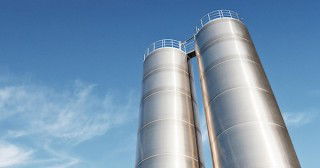While modern cement production technology favours the dry-process, there are occasions were a semi-wet process is the only choice – for instance, if the limestone deposits used as a raw material source only supply wet product. Michael Kapphahn, Holcim (Deutschland) AG, Germany, draws from his experience.
The natural water content of raw materials contributes to the heat consumption of the whole cement production process (see Figure 1). Hence, the raw material deposit determines in advance the thermal heat consumption within reach. Although dry limestone deposits are largely to be preferred for new projects, in some regions (eg southeast Russia and parts of Ukraine and Belarus) widespread wet chalk deposits prevail. In these cases, using this wet raw material is the only option.
